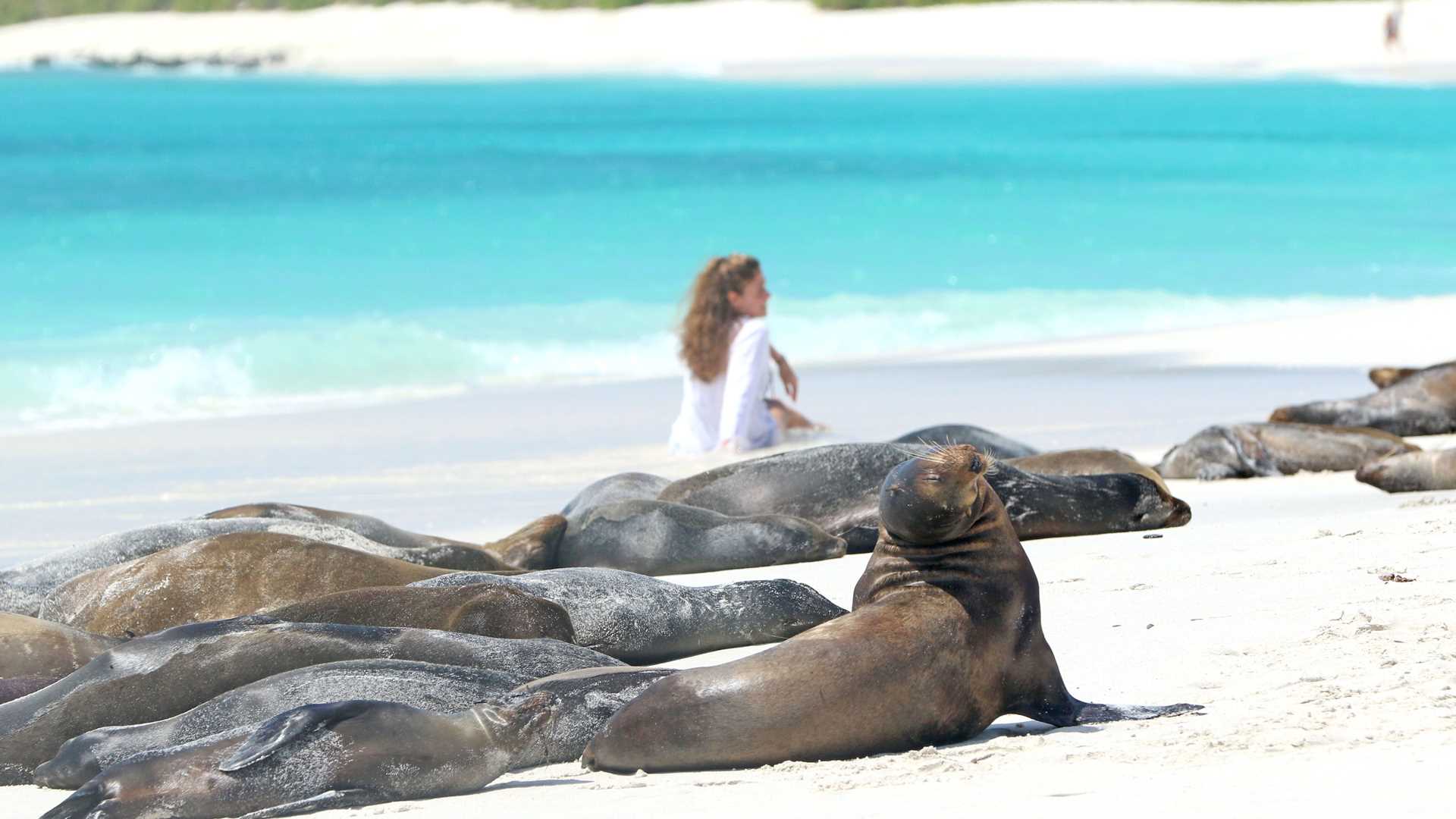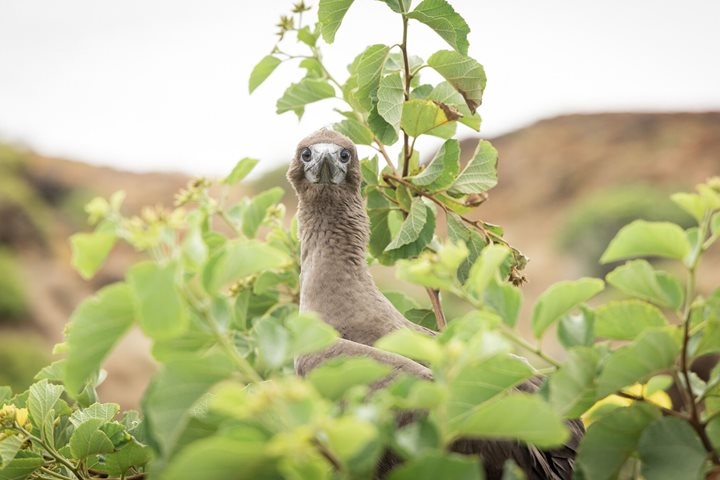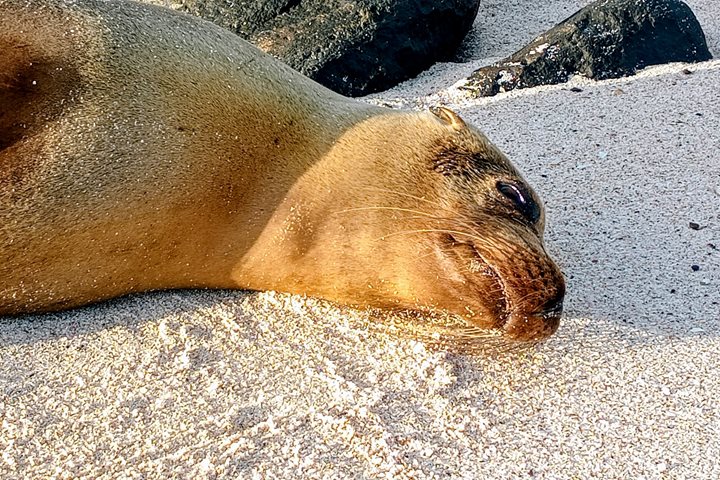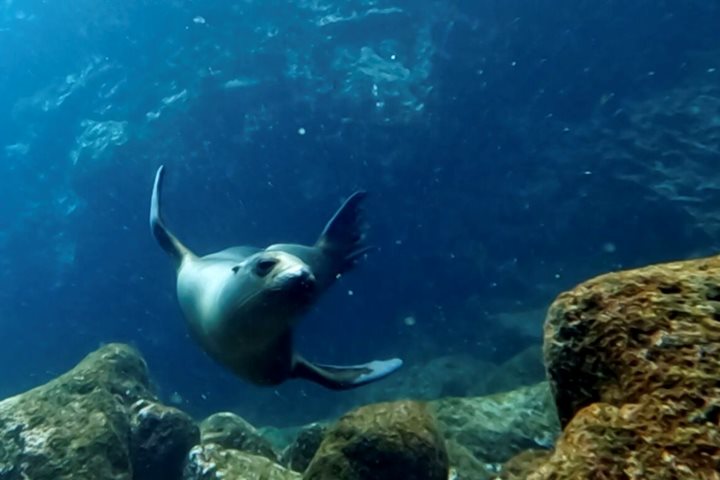To the southeast corner of the Galapagos lies Espanola, an island dating from 3.5 to 5 million years ago. It contains a high degree of endemism with a number of species of animals that only live here. The north has one of the most beautiful beaches in the world with turquoise water and white sand where sea lion colonies hang out. The eastern part of the island has large colonies of nesting Nazca boobies, colorful marine iguanas, and majestic waved albatrosses, which only nest here. By far, one of the most fantastic opportunities to see wildlife in its purest state.
- Daily Expedition Reports
- 29 May 2023
Española Island, 5/29/2023, National Geographic Islander II
- Aboard the National Geographic Islander II
- Galápagos
Share Report
Galápagos Escape: An 8-Day Voyage
VIEW ITINERARYRelated Reports
6/23/2025
Read
National Geographic Islander II
Española Island
Today we visited Española Island, the southernmost—and one of the most spectacular—of all the Galápagos Islands. Known for its unique wildlife and dramatic landscapes, Española offered us a day full of unforgettable encounters. In the morning, we landed at Gardner Bay, where a long stretch of white coral sand welcomed us. Galápagos sea lions lounged along the shore, completely unfazed by our presence. Offshore, we snorkeled in the clear waters among colorful reef fish and Pacific green sea turtles. Playful sea lions swirled around us like underwater acrobats. In the afternoon, we explored Punta Suárez, one of the best wildlife viewing sites in the entire archipelago. The trail led us through colonies of Nazca boobies and blue-footed boobies, some engaged in nesting or courtship dances. We also witnessed waved albatrosses, many sitting on eggs or gliding in the wind above the cliffs. The highlight for many was watching a pair of albatrosses perform their elaborate, synchronized courtship ritual, full of beak clacking and head swaying. As we approached the cliff’s edge, we were treated to the dramatic sight of waves crashing against the rocks and the famous blowhole, which sent bursts of water high into the air. With seabirds soaring overhead and marine iguanas sunbathing in every direction, the magic of Española was on full display.
6/22/2025
Read
National Geographic Islander II
Floreana Island
Today the guests of National Geographic Islander II had a chance to snorkel at Champion Islet, just off Floreana Island. It was a breathtaking expedition to one of the most vibrant marine ecosystems in the Galapagos. As soon as we slipped into the water, we were greeted by schools of colorful fish and playful Galapagos sea lions.







